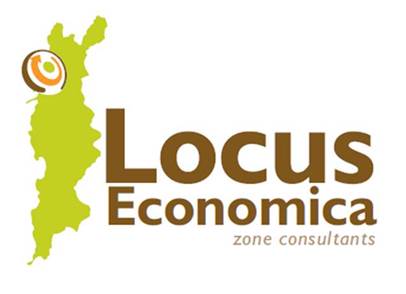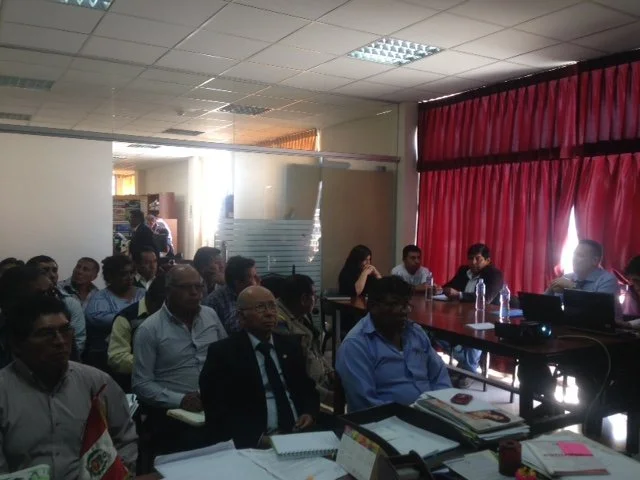Peru
Thanks to positive structural reforms, strong external demand for commodities, and prudent macroeconomic policies, Peru’s economy has grown strongly, at an average of 5.9%, over the past decade. Per capita income doubled during this period, outpacing the region by 50%. The lower-income population has benefited the most from this growth. The per-capital income of the bottom 40% of households has grown by 6.8% per year, compared with a 4.4% average for the whole population. Inequality has dropped by 12.6% compared with a 5.3% average in the region. Increased wages have been the main cause of reduced poverty, with redistributionist policies, by contrast, only explaining 15% of poverty reduction.
Locus Economica’s Jean-Paul Gauthier (centre right) pictured with the UNIDO delegation at the Foreign Minister's Palace in Lima in 2019
Peru has a relatively open national investment environment, with relatively few controlled or restricted sectors. It is also the 2nd ranked country in South America on the World Bank Group’s Doing Business rankings, after Chile. The primary constraint on growth appears to be regulatory bureaucracy, which adds difficulty and expense to starting and operating a business. Labor regulations have made it very difficult to terminate employees, which leads to low productivity, a large informal sector, and few opportunities for young, motivated talent.
Peru’s free zones program originally consisted of the Centros de Exportación, Transformación, Industria Comercialización y Servicios (CETICOS which translate as “Centres for Export, Transformation, Industry, Marketing and Services”) at Ilo, Matarani, and Tacna. In 2001, the government transformed the CETICOS in Tacna into a new type of zone, the Tacna Free Zone, or Zofratacna.
As a result of the recommendations of Locus Economica’s program review, in 2016, Peru’s 6 CETICOS zones were converted to ZEDs. In May 2018, the law governing ZEDs was modified to further facilitate investment. In June 2019, Peru began to consider a modern, new SEZ bill. In August 2019, the Ministry of Trade announced a tender for private operators for 2 of the ZEDs.
As of July 2020, Peru had 7 FTZs known officially as “zonas francas” (free zones), “zonas económicas especiales” (SEZs), “zonas especiales de desarrollo” (ZED; “special development areas”) or “CETICOS”. They have a combined total of 155 companies located there, employing about 2,000 people directly and 7,000 indirectly. The export revenue generated from these Peruvian FTZs totalled US$ 47 million, with imports of US$ 458.2 million, making up 90% of net trade.
The four main special economic zones are: la Zona Especial de Desarrollo (ZED) de Ilo, ZED Paita, ZED Maratani and Tacna Free Zone, which predominantly specialise in industrial production, agroindustry, storage and logistics. In August of 2021, a new tax-free zone known as Zona Franca de Cajamarca located in San Ignacio was approved by congress with the aim of facilitating trade with Ecuador.




